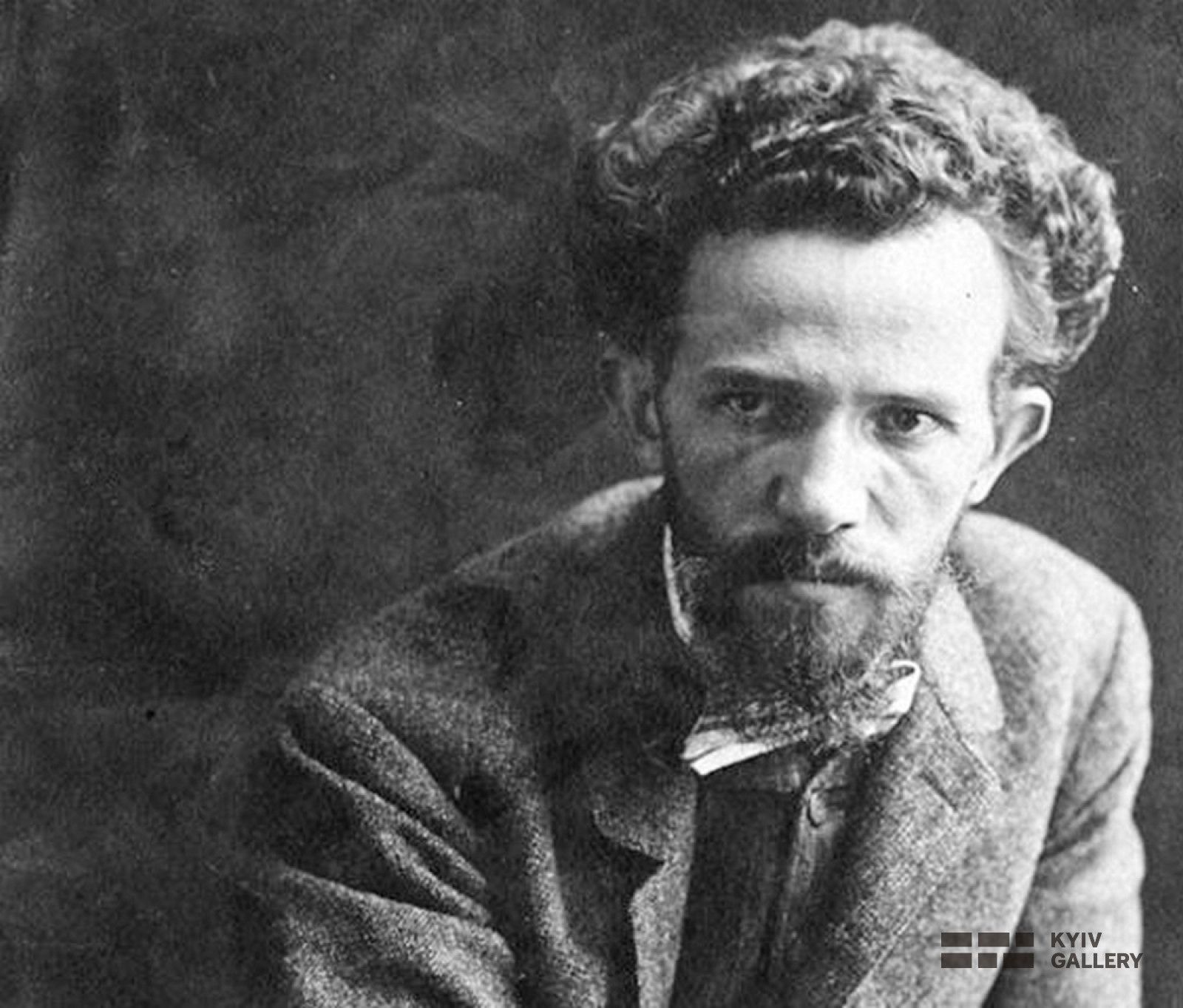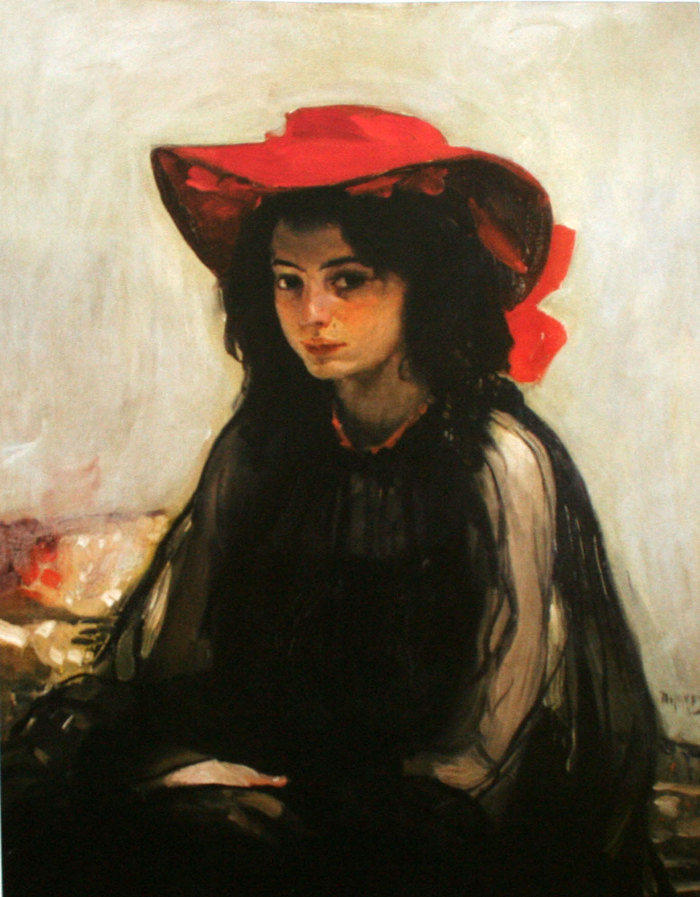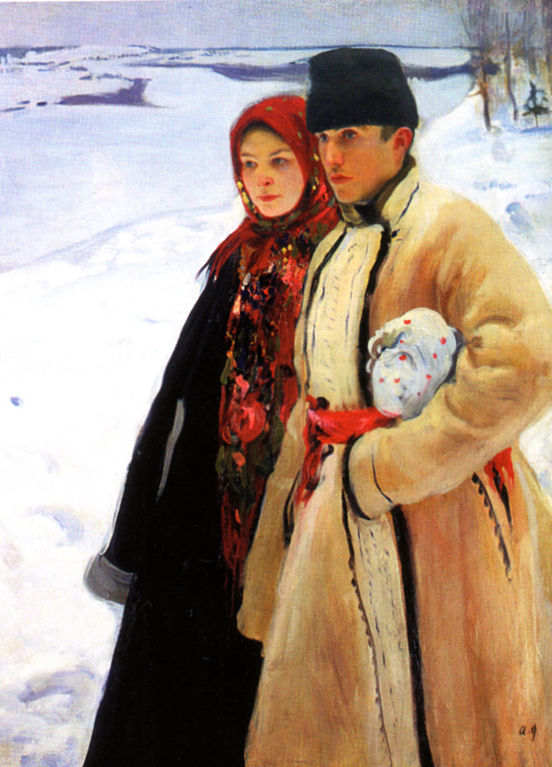

Oleksandr Murashko was one of the first to foresee the onset of a new era in the history of Ukrainian fine art and took an active part in the cultural life of our people. His active civic position and selfless work in the name of the revival of Ukraine eventually brought him a martyr's crown. Master of painting, mentor, and public figure - this is how world history remembered Murashko of art.
The thorny path to the top of mastery
Oleksandr Murashko was born on August 26, 1875 in Kyiv. The childhood of the future artist was overshadowed by the absence of parents and uncertainty with the issue of guardianship. He was the illegitimate son of Maria Krachkovska, who gave her son to his grandmother. Later, Murashko got into his uncle's family, and after some time, he reunited with his mother after her remarriage. The owner of the icon painting workshop Oleksandr Murashko became the stepfather of little Sasha. The stepfather saw the boy as an icon painter. At his suggestion, the boy began to paint icons and take an active part in the work of the family enterprise. In the late 80s, Murashko had the opportunity to observe the work of Viktor Vasnetsov, Mikhail Nesterov, and Mikhail Vrubel. They were invited to participate in the painting of the Kyiv Cathedral. Still, Sashko dreamed of a career as a painter and, for some time, combined visits to the workshop of the godmother with lessons at the school of drawing of Mykola Murashko, brother of Alexander Murashko.
After the plans of the future artist were revealed, he quarreled with his stepfather and left home. Wandering in the company of hobos inspired him to create many sketches and gave him invaluable experience communicating with people from different social strata. After some time, he managed to get help and money to study at the St. Petersburg Academy of Arts, where Ilya Repin became his teacher. Even in the process of learning, his portraits were recognized by critics, collectors, and teachers. Murashko spent his vacations in Ukraine, inspired by the landscapes and scenes from the lives of ordinary people. It is not surprising that the plot of his diploma work "The Funeral of the Koshovyi" is connected with Ukrainian themes. The success of the painting allowed him to receive the title of a free artist and a pension for a trip to Europe.
Traveling in Europe
In 1901 Murashko arrived in Paris. Here he visits famous museums, where he gets acquainted with the works of masters of the old school. At the same time, he feels a strong influence of modernist trends in painting. Then France had already cooled down to impressionism and admired the artistic language of modernism, but the master ignored fashion trends following his life philosophy. The stylistic techniques of impressionists and his respectful attitude to color made a great impression on the artist. After the Paris experiments, the style of the master entered the final stage of its formation. It became characterized by the following features:
- the use of deep colors and chiaroscuro techniques to enhance the expressiveness of images;
- plastic expressiveness of art pieces is often achieved by introducing diversity between a dark silhouette and a light background;
- skillful use of line and compositional techniques to control the planes of color masses;
- the desire for harmony between the emotional states of the characters and the atmosphere of the surrounding space;
- distance from mythological symbolism, all unnaturalness, and "ceremonial" in the depiction of reality.
From Paris, Murashko went to Munich. Here he attended the school of Anton Ažbe, got acquainted with the famous masters of modernity, and continued to work on his author's style. The European trip ended in 1903 with his return home.

"Girl in a Red Hat" Oleksandr Murashko. Photos © museum.net.ua
Later, the master's works repeatedly appeared at exhibitions in Rome, Venice, Amsterdam, Berlin, Dusseldorf, Vienna, and other European cities. In 1911 he was even elected a member of the Munich Secession.
Moving to Kyiv and pedagogical activity
In 1909, the artist moved to Kyiv and married the daughter of a notary Marharyta Kruger. In the autumn of the same year, he began his teaching career at the Kyiv Art School. Attempts to work with students according to European methods met with resistance from other teachers, so in 1913 Murashko opened his studio. The master often ordered portraits, but working with eminent customers did not bring him much joy. Therefore, the paintings of this plan are less attractive than those painted not to order. The First World War destabilized the socio-political situation in the Russian Empire and started the process of its collapse. During the war, Murashko continued his pedagogical activity and, more and more often, painted portraits of relatives and friends.
The most famous paintings by Alexander Murashko are
1. "Girl in a Red Hat" (1903). The picture was painted during his stay in the French capital. The wonderful atmosphere of Parisian salons and the incredible concentration of art objects of past eras inspired Murashko to paint a portrait of a young woman in a red hat. The master managed to reproduce the delicate features of the model's face with filigree accuracy. The portrait demonstrates the author's ability to work with general lighting to disclose images fully. The painting is rightfully considered one of the most famous works of Ukrainian masters of the twentieth century.
2. "Near the cafe" (1903). Another work of the Parisian period. The canvas depicts French ladies in fashionable dresses and hats talking about their business near a cafe. Behind them, you can see the night street of the French capital, silhouettes of visitors, and lights of lanterns. The canvas gives an excellent idea of the atmosphere of the night city, in which the artist was lucky to spend so much time. The canvas demonstrates the rare ability of the master to give dynamics to static scenes.
3. "Winter" (1905). A portrait of two young people, probably a couple, against the background of a winter landscape of nature demonstrates Murashko's fantastic ability to combine warm and cold tones to enhance the expressiveness of images. The faces and clothes of the story's main characters give the viewer an idea of the traditions and culture of the village, which for centuries preserved the Ukrainian national identity under occupation.

"Winter" Oleksandr Murashko. Photos © commons.wikimedia.org
Notably, almost all of Murashko's portraits were dedicated to ordinary people in their natural environment. The atmosphere of solemnity was given to the author's canvases by a unique manner of depicting reality, not an intricate plot.
4. "Carousel" (1906). One of the most famous works. The author managed to give the figures on the carousel a stunning dynamism that conveys to the viewer a sense of a whirlwind. The work was presented at the International Exhibition in Munich in 1909. Unfortunately, the further fate of the canvas is unknown. At one time, the painting was purchased by a collector from Budapest and placed in his castle, which was later destroyed during the bombing in the 40s. The sketch of "Carousel" is kept in the National Art Museum in Kyiv.
5. "Annunciation" (1909). Despite his deep knowledge of icon painting, Murashko, in his mature years, almost entirely moved away from religious themes. The painting "Annunciation" was practically the only exception to this rule. Despite the unconventional Christianity lamentation of the Gospel story, the work was able to preserve the solemn atmosphere of the action due to the deep yellow color spilled over the entire canvas. Most likely, the source of inspiration for the master was the works of impressionists, whom he met in Paris during his travels in Europe.
6. "Flower Sellers" (1917). Another work of the master was written shortly before his death. Today you can admire this masterpiece in Kyiv's National Art Museum of Ukraine. Before the viewer's eyes, as if from somewhere, the figures of older women are traced with broad strokes of deep blue paint. The cheerful atmosphere conveyed by the bright colors on the canvas contrasts with the sad faces of the salespeople.
7. "Self-portrait" (1917). One of the last self-portraits of Murashko, written two years before his death. The contrast of cold and warm shades creates a unique visual effect. From the canvas, the viewer sees not only a talented artist cherished by the attention of European art lovers but also an exemplary family man, teacher, public figure, and patriot of Ukraine. The concentrated look expresses anxiety for the country's future, plunged into the chaos of civil war. The dark background enhances the sense of inner drama.
The last years
In 1917 he took an active part in the work of the Academy of Arts (the first Ukrainian higher art educational institution). Due to constant interruptions in the supply of paints, canvases, and other materials, the educational process was constantly disrupted. The general atmosphere in the Ukrainian capital was alarming because of the exhausting war on the European continent. Unfortunately, under such conditions, official duties left little time for creativity. A new turn in the life of the master occurred in early 1919 when the capital of the young Ukrainian republic was occupied by the Bolsheviks. As a wealthy man, Murashko was included in the list of so-called kulaks and obliged to pay contributions to the new government. Later they tried to send him to forced labor.
Murashko, as a prominent representative of the Ukrainian creative intelligentsia, interfered with the Bolsheviks' plans to build a Soviet country. It was not even about money or love for Ukraine. The new government needed people with a fully formatted worldview, ready to obediently carry out any orders. Unfortunately, under such conditions, the fate of prominent representatives of Ukrainian culture was decided in advance. On June 14, 1919, Murashko was attacked by unknown persons during a walk with his wife. He was taken away allegedly to check documents, and later his body was found: a shot to the back of the head interrupted the life of the master. Of course, no one conducted any investigations, but this case entirely fits into the logic of the behavior of the Soviet government, which in subsequent years destroyed millions of Ukrainians. Some art historians claim that Murashko became the first victim of the Ukrainian "Executed Renaissance."
KyivGallery art critic
